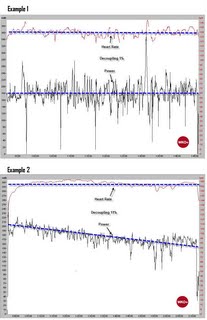Thoughts on the Base Period
All of the athletes I coach are now in their early Base periods. So I've been talking with them about why this period is so important. Here's the gist of what these conversations have been about.
In many ways Base is the most important training period of the entire season. If it goes well you will be able to train at a higher level in the following periods. If it doesn’t go so well you won’t be able to train to your limits later on in the Build period and you’ll be more likely to break down due to overtraining, illness and injury.
Training in the Base period has been compared with laying the foundation for the construction of a house. Build a solid foundation and the house will be sound and free of cracked walls and sagging corners. Do a very poor job of constructing the foundation and the house is likely to collapse as it is stressed by harsh conditions.
The Base period has also been described as being like an Egyptian pyramid: The broader the base of the pyramid, the higher the peak that can be built on it. I've always liked this analogy.
However you like to think about it, the bottom line is that the Base period is when you construct your season. Everything you do after this period is dependent on what you accomplish now. It’s certainly not an 'off season' in the sense that it is relatively unimportant. This is a time that is critical to your success later on. You need to have defined objectives for the Base period and a training plan for accomplishing them. The higher your goals are for your racing this season, the more important clear objectives and a plan become.
The biggest mistake athletes make in the Base period is by-passing the basic-ability workouts that should be done in order to get to the truly hard sessions of the Build period such as high-intensity intervals, anaerobic hill repeats and 'racing' with training partners. Athletes commonly skip the Base period because the workouts seem too easy. They come to the conclusion that they aren’t working hard (read 'intensely') enough. If that happens and you cut out Base training, your fitness will not be as great later on as it would have been following several weeks of laying down a solid foundation.
There are four 'abilities' I strive to improve in the Base period for the athletes I coach: aerobic endurance, speed skills, muscular force and muscular endurance. The last of these is dependent on the previous development of aerobic endurance and muscular force so is delayed until later in the Base period. These are described in my books.
The bottom line for the serious athlete: Know what it is you must accomplish in the next few weeks, develop a plan and follow it closely.
Labels: aerobic, base, endurance, force, muscular endurance, speed skills


